Have you ever found yourself in the middle of a project – saw in hand – only to realize that you have the wrong saw for the job?
Maybe you’re struggling to cut a straight line through a piece of lumber or trying to make a precise angle cut with a wrong saw type that just won’t cooperate.
It’s a frustrating and all-too-common experience. That’s why understanding the different types of saws available is essential.
No two saws are the same; each type of saw whether it be hand-held or power-operated has its advantages and disadvantages that suit specific tasks and projects.
What Are The Various Types of Saws & When to Use Them?
Generally, saws are categorized into 2 major segments: Hand saws and Power saws.
Hand Saws are further classified into two categories:
- Back Saw
- Frame Saw
1. Hand Saws & Their Types
Hand saws are perhaps the most traditional and recognizable type. They are manual saws that are powered by hand without any external power source.
While power saws have taken over much of the heavy lifting, hand saws still have a vital role to play especially for small or precise jobs.
Hand saws are available in various shapes and sizes and their blades are typically made of steel, iron, or other durable materials.
Various Types of hand saws include:
1.1 Crosscut Saw
A crosscut saw is a great tool for woodworking & construction projects as it enables one to cut boards and planks in a precise manner.
It can provide smoother cuts since it is designed to work across the grain of the wood.
The crosscut saw features a wide blade that is usually between 10 and 12 inches in length, with sharp teeth that are angled to cut through wood fibers cleanly.
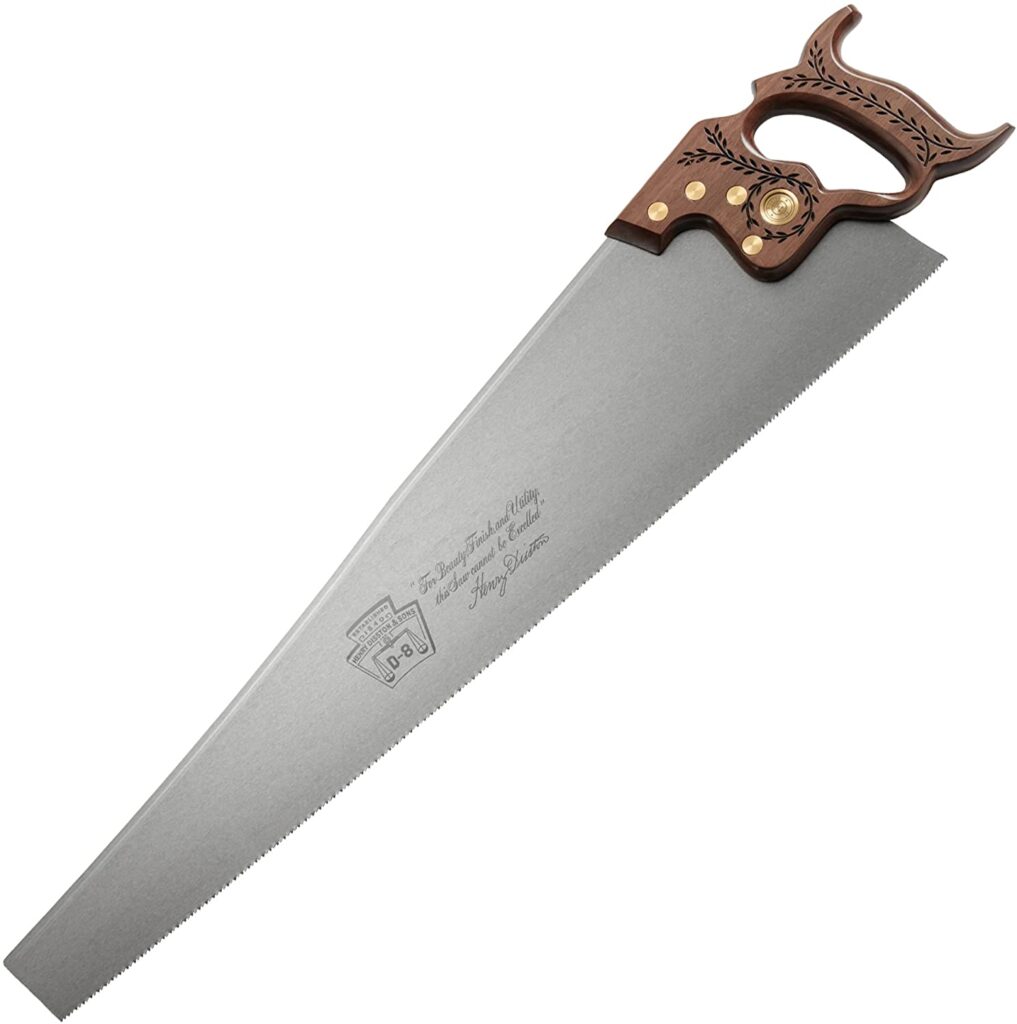
The saw is used with a back-and-forth motion while the user applies pressure to the saw and guides it along the desired cut line. It is necessary for a lot of woodwork.
Advantages & Disadvantages of Crosscut Saw
One of the advantages of a crosscut saw is its ability to make precise cuts in wood. Unlike other saws that may leave jagged edges or tear out fibers, it creates straight cuts that require little or no sanding.
Another advantage of a crosscut saw is that it is lighter in weight than a chainsaw.
It however requires proper and safe handling as it can be hazardous if not used with caution. It is crucial to understand the use of these tools before attempting any type of cutting task.
1.2 Ripsaw
Ripsaws are handheld tools used for cutting wood along its grain. They generally create long, precise cuts on boards and planks and are a must-have in any woodworking shop.

Ripsaws have blades that measure an average of 26 inches and have fewer amount of teeth per inch. The tooth profile is quite aggressive, helping the saw cut through wood fibers rapidly.
When you need to rip or re-saw a piece of wood, it’s best to use a rip saw for the job.
Advantages & Disadvantages of Ripsaw
A ripsaw makes fast cuts in wood. It can be used to cut through thick pieces of wood with relative ease.
However, there are some limitations to using a ripsaw. Because of its pushing motion and the force required, it can be tiring to use for extended periods.
A crosscut saw is specifically designed to cut the wood perpendicular to direction of wood grains , whereas a rip saw is designed to make cut parallel to the direction of wood grains.
Darial woodworking
1.3 Compass Saw
A compass saw also known as a keyhole saw is a type of hand-held saw that is primarily used for cutting curves or circular shapes in wood. The saw pivots and makes tight turns while cutting.
Compass saws typically have a thin, narrow blade between 6 to 15 inches long with a curved handle at one end and teeth along the edge.
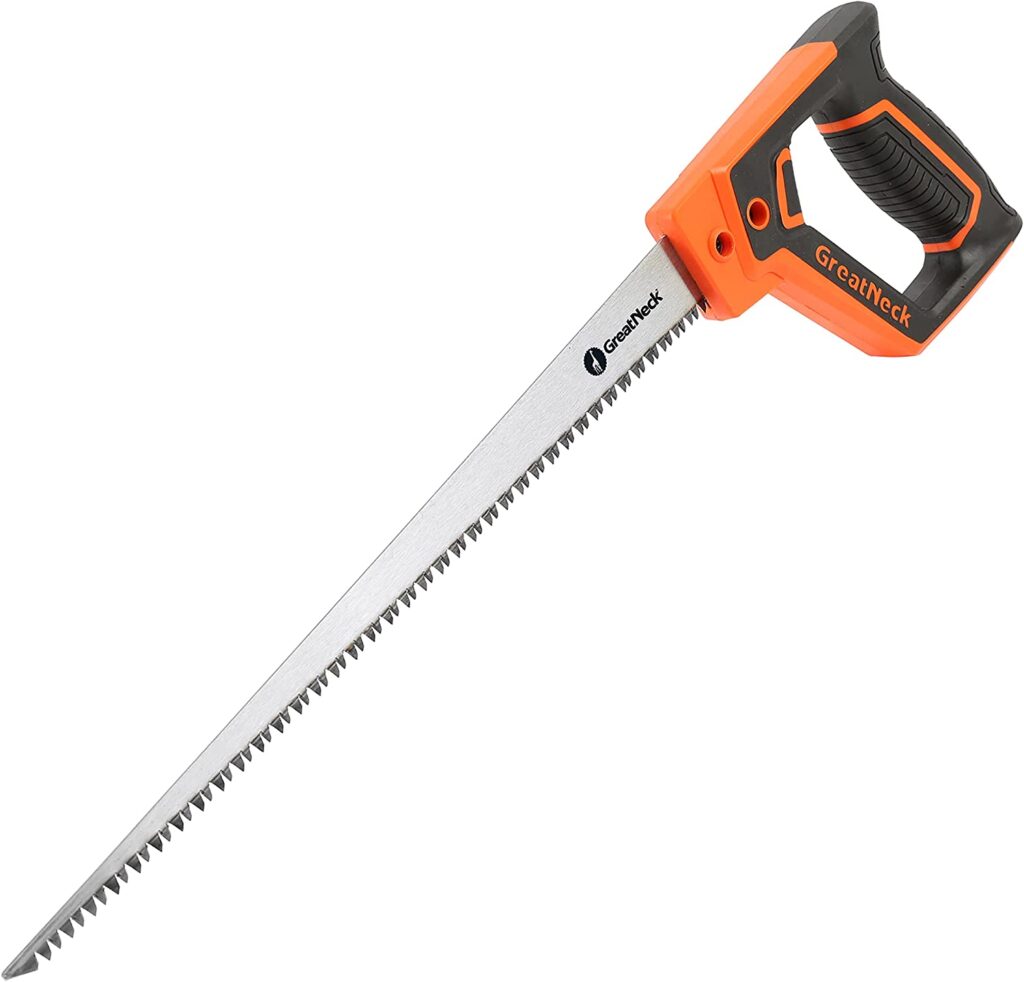
The blade is often shaped with a wider section at the base. The saw can be pivoted to make curved cuts such as those needed for cutting out holes for door knobs or electric switches.
Advantages & Disadvantages of Compass Saw
Compass saws make curved cuts in wood with ease; their thin, flexible blades can easily navigate tight turns and intricate shapes.
Also, they are relatively inexpensive and easy to use.
The downside is these saws are not well-suited for cutting through hardwood and ferrous metals.
1.4 Japanese Saw
A Japanese saw also known as a nokogiri or pull saw is a type of hand saw that is commonly used in woodworking and carpentry.
Unlike traditional saws which use a pushing motion to cut through wood, Japanese saws use a pulling motion and allow for more control and precision.
Japanese pull saws are often considered the best pull saws in the market. They are very handy when it comes to installing casing and base trims or even cutting delicate moldings.
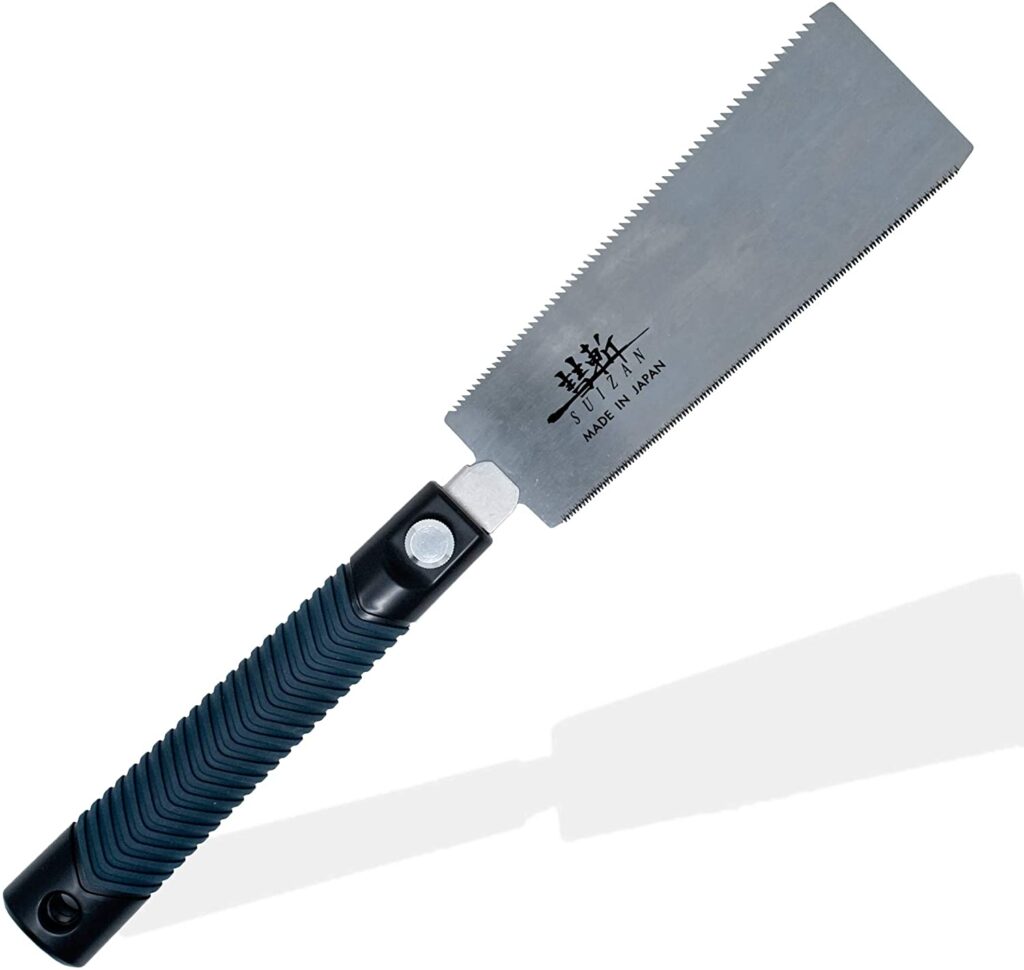
Consequently, they prove to be great tools for many different tasks.
Advantages & Disadvantages of Japanese Saw
Japanese saws cut on the pull stroke rather than the push stroke which allows its blade to make cleaner and narrower cuts, making it easier to see precise angles.
It cuts through wood with minimal resistance and with greater accuracy. The pull stroke also provides more control over the saw
One major disadvantage is the sawdust can accumulate on the cut line and obscure your view making it more difficult to see where you’re cutting.
This can lead to mistakes and inaccurate cuts. Use a brush to clear away sawdust from the cut line as needed.
A. Back Saws
Back saws are a subdivision of hand saws. Unlike regular hand saws, back saws have a rigid strip of metal or wood along the top edge of the blade called the “back” which provides additional support and stiffness to the blade. This allows the blade to remain straight while sawing.
There are diverse types of back saws including:
1.5 Dovetail Saw
A dovetail saw is a type of back saw that is specifically designed for cutting dovetails as well as other fine woodworking tasks such as cutting tenons and trimming joints.
Dovetail saws typically have a thin, narrow blade (usually between 6 and 10 inches in length) with a high number of teeth per inch (T.P.I.). The T.P.I. for dovetail saws is usually around 15-20.
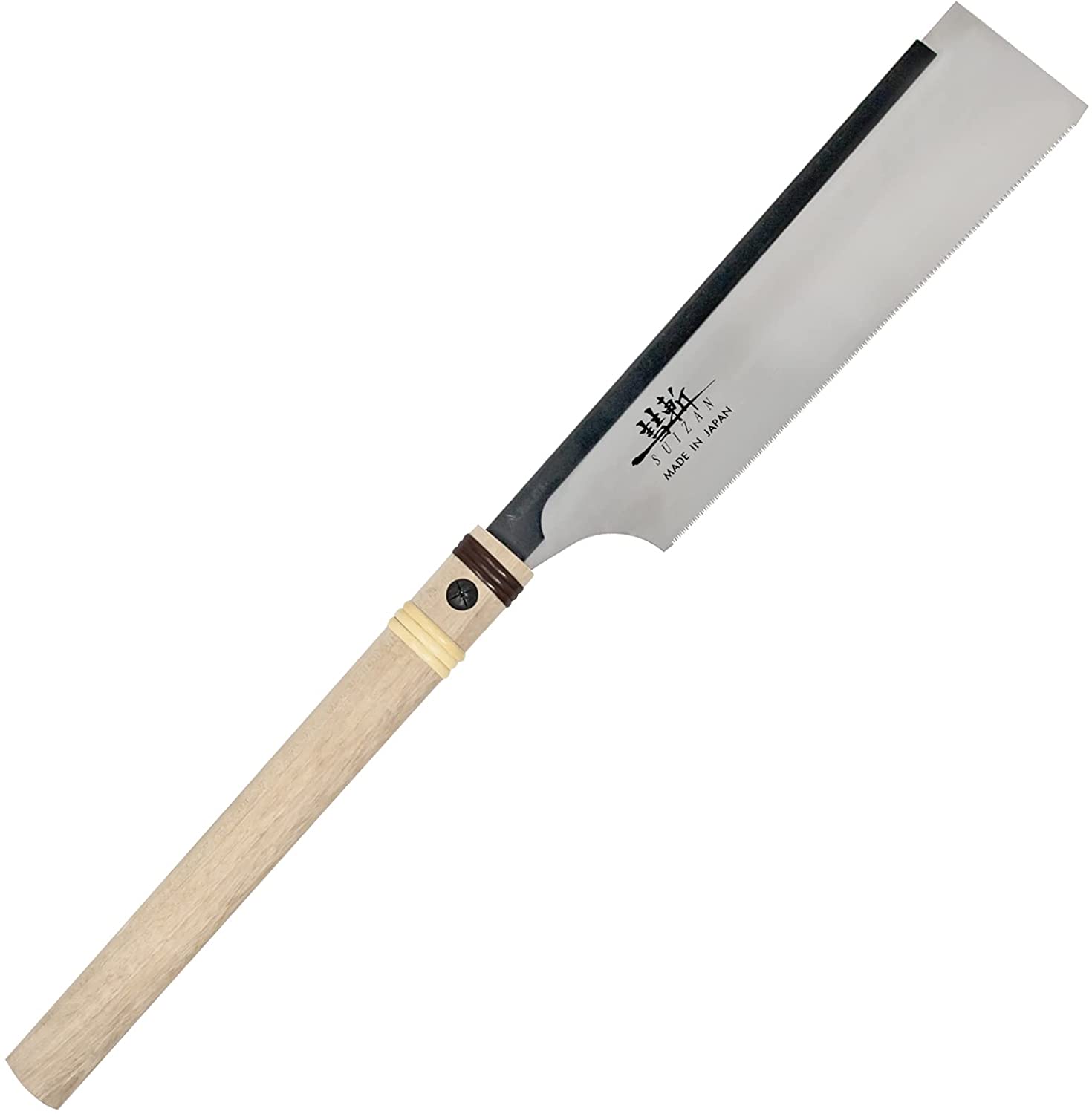
The blade of a dovetail saw is also usually stiffened with a reinforcing spine or back which keeps the blade from bending or flexing during use.
This stiffness is vital for achieving accurate cuts, especially when working with hardwoods or other dense materials.
To use the saw, a pulling motion should be used – applying only small pressure on it and guiding it along the cutting line.
Advantages & Disadvantages of Dovetail Saw
The weight of the saw along with the angle of the teeth and the sharpness of the blade all contribute to its cutting ability.
Dovetail saws cut through wood more slowly than saws with fewer teeth. This makes them less efficient for cutting larger pieces of wood or for rough-cutting tasks.
1.6 Miter Box Saw
Miter box saws are typically back saws used in conjunction with a miter box (a tool that helps guide the saw to make accurate cuts at specific angles).
Miter box saws are often used for cutting trim or molding and are available in different sizes and tooth configurations to suit different types of cutting tasks.
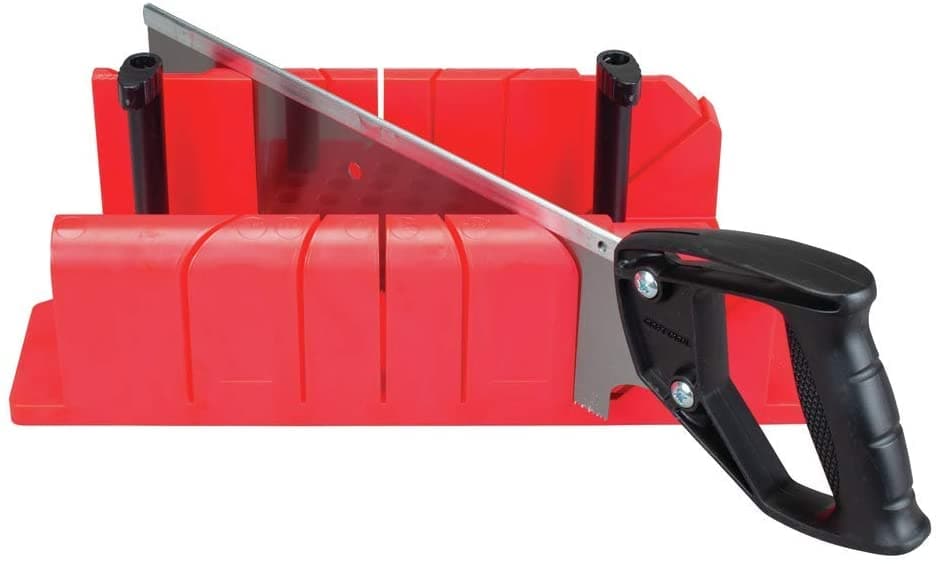
They come in a variety of blade sizes with the most common being 12-inch and 14-inch blades.
Advantages & Disadvantages of Miter Box Saw
Miter box saws are a great tool for anyone who wants to make accurate cuts at angles. They are user-friendly and require very little effort, allowing even beginners to use them.
Additionally, they’re conveniently lightweight and portable so you can take them with you wherever you need to go.
Incorrect adjustment of the saw blade or inadequate pressure being applied to keep it in its guide slots can lead to the box being cut into.
Cutting hard materials can be challenging and often leads to a wobbly & shaky experience that compromises accuracy.
1.7 Sash Saw
A sash saw is an ideal tool for cutting any thin wooden pieces; like the kind, you’d use in creating window sashes. Its blade is a thin strip of steel with teeth along one side that’s held securely in its frame.
Sash saws have long been favored by woodworkers for their precise and controlled cuts.
Previously, they were used in small-scale water-powered mills.
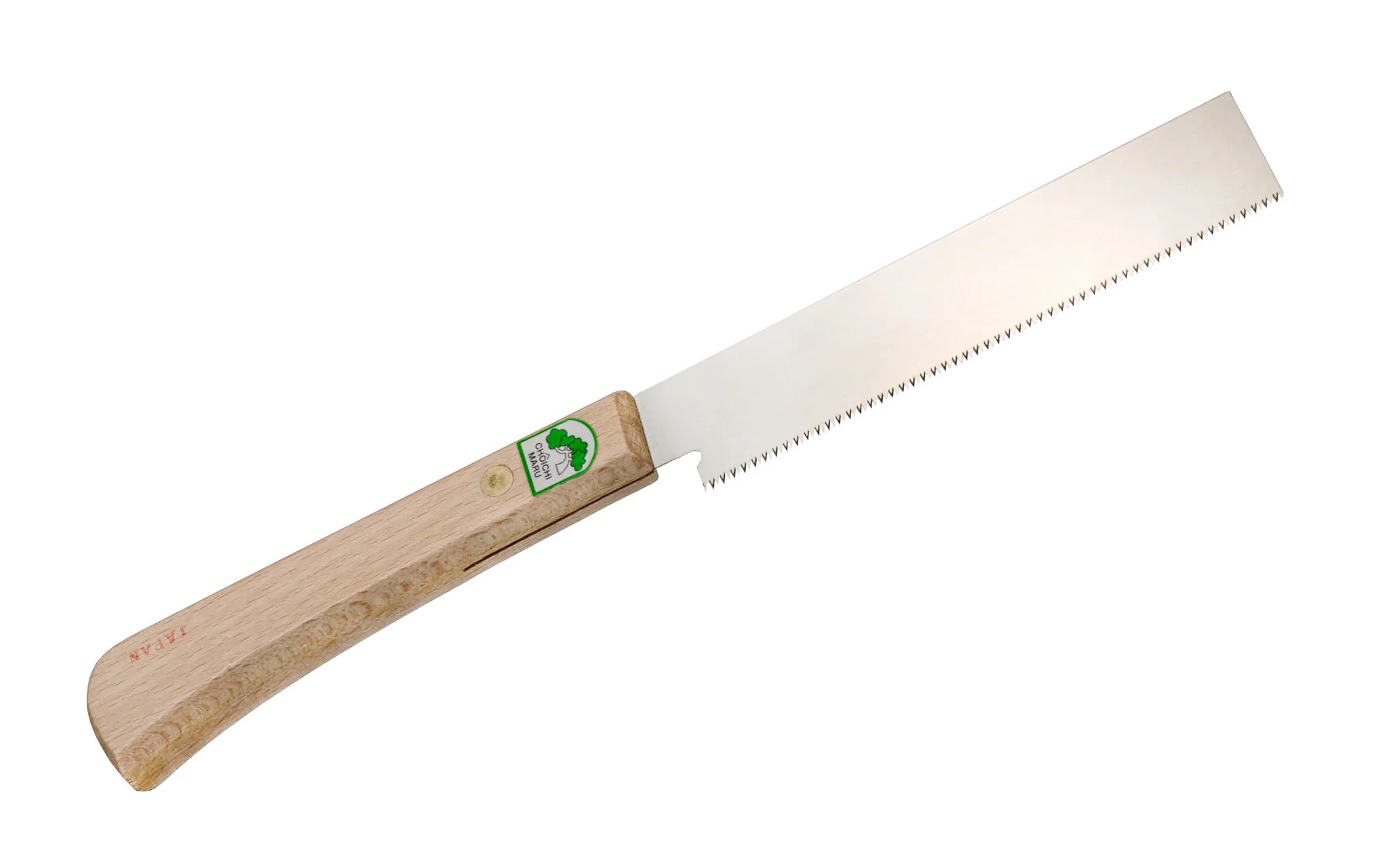
Even though miter saws are highly efficient, they are not as commonly used as their counterparts such as circular saws or band saws for larger woodworking projects.
Sash saws come with blades ranging from 14 to 16 inches in length and 13 teeth per inch. The handles are ergonomically designed making them easy to hold and maneuver for your convenience.
Some sash saws have a handle that is angled or offset from the blade allowing the user to make cuts at different angles without the handle getting in the way.
Advantages & Disadvantages of Sash Saw
Sash saws achieve precise and smooth edges; the blades are sharpened at specific angles to guarantee a consistent level of performance. This ensures that you get accurate and smooth cuts every time.
They are also lightweight and easy to maneuver which gives the user greater control over the cutting process.
Sash saws may be a bit hard to come across since they are not as widely manufactured as other saw types.
B. Frame Saws
These saws differ from other types of saws in their design, as they consist of a thin, flexible blade held between two wooden or metal frames.
Examples of frame saws are:
1.8 Fretsaw
A fretsaw is a small, handheld saw that is primarily used for intricate woodworking projects.
It is similar in design to a hacksaw – with a thin, narrow blade held in place by a C-shaped frame.
The blade is usually fine-toothed, allowing for precise cuts in tight spaces and around curves.
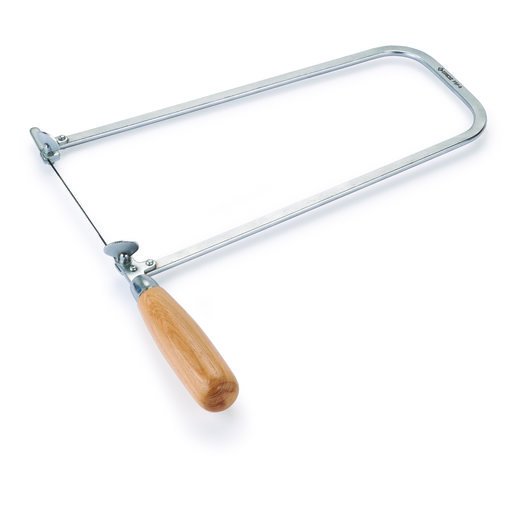
Fretsaws are commonly used for cutting curves, angles, and intricate shapes in thin pieces of wood such as trim work or decorative pieces.
Advantages & Disadvantages of Fretsaw
Fret saws provide more flexibility with their longer frames, allowing for cuts that are further away from the edges of materials than other saws. The thin blade allows for tighter curves and intricate designs.
The saws are not made to perform fast and powerful strokes due to the type of handle they feature. It is difficult to exert pressure with this kind of handle, therefore making them better suited for gentle cutting instead.
1.9 Coping Saw
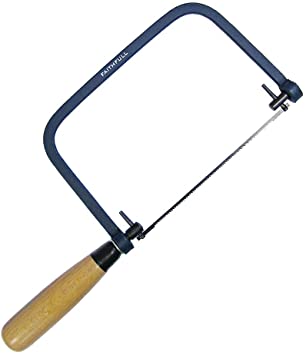
A coping saw is a type of hand saw that is commonly used for cutting intricate shapes and curves, particularly for creating coping joints in woodworking.
These saw blades have a narrower profile and usually feature between 15-17 teeth per inch of the blade.
Advantages & Disadvantages of Coping Saw
Coping saws can be used to cut a variety of materials, including wood, plastic, and metal. They are very versatile. The frame saws are especially handy when carving curves or intricate shapes due to their superior accuracy compared to other types of hand saws.
A downside of this tool is it is challenging to use for repeatable cuts as it can be difficult to reproduce the same shape or curve multiple times.
Also, the blades are delicate and can break easily if not used properly or if they come into contact with a hard surface.
1.10 Bow Saw
A bow saw is a type of saw with a metal frame in the shape of a bow that holds a wide & coarse blade.
The blade is usually toothed on both edges allowing for both rip and crosscutting, and it can often be rotated for versatile cutting angles.
Bow saws are commonly used for cutting tree trunks but they can also be used for a variety of other cutting tasks, including curved or straight cuts in wood or other materials.
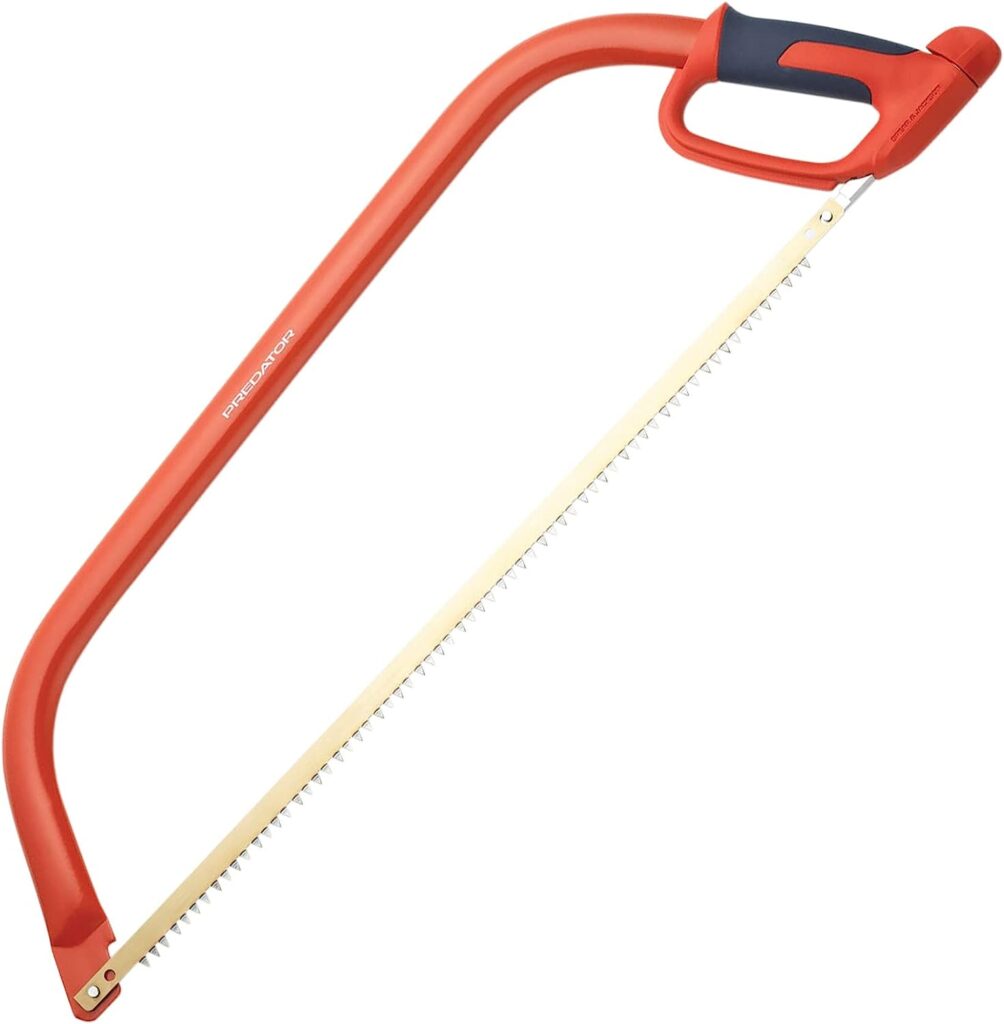
They are a popular tool for outdoor activities like camping, hiking, and bushcraft, as well as for woodworking and home improvement projects.
Advantages & Disadvantages of Bow Saw
Bow saws are the perfect tool for taking on woodcutting jobs such as cutting large branches into pieces. Their curved blades and lightweight design make them a user-friendly option that gets the job done competently.
Furthermore, they are relatively affordable and require minimal maintenance.
One of the cons when using this saw is that due to its handle, it might be difficult to reach some cramped areas. In addition, its blades are susceptible to rusting.
2. Power Saws
Power saws have revolutionized the way woodworkers and construction professionals work; they are absolutely indispensable tools when it comes to completing jobs quickly.
These saws rely on a motor to power the blade, allowing them to cut through materials at a much faster rate and with more precision than traditional hand saws, delivering superior results every time.
Some common mechanically powered saws include:
2.1 Circular Saw
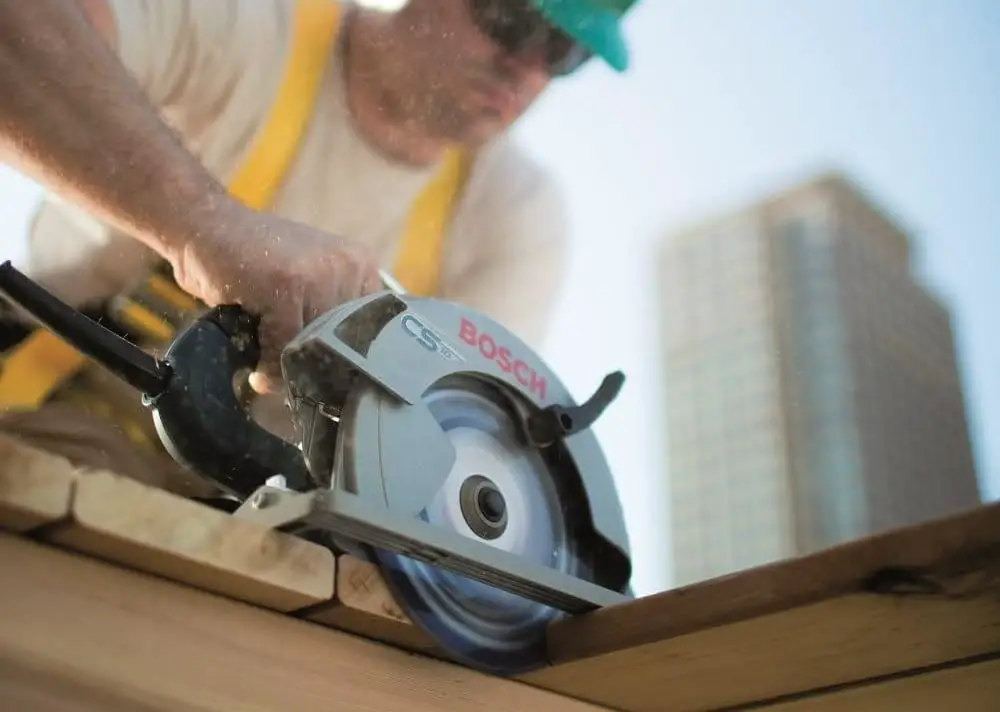
Circular saws consist of a motor that drives a circular blade mounted on an arbor, which rotates at high speed to cut through materials. The blade’s teeth are designed to slice through wood smoothly with different blades having different tooth patterns and sizes optimized for specific materials.
Advantages & Disadvantages of Circular Saw
Circular saws are efficient tools for cutting different kinds of materials like wood, metal, plastic & so on. They can be used to carry out various types of cuts like cross-cutting, ripping, beveling, vertical cuts, miter cuts, and plunge cuts with precision.
These saws are designed to cut quickly and efficiently, making them ideal for large cutting jobs.
Working with a circular saw can be risky if you’re not careful and take the necessary safety precautions.
Additionally, they tend to be quite loud which may cause problems in an enclosed area or when used near other people.
2.2 Table Saw
It is a table-mounted saw with a circular blade system that makes a stable and reliable platform for making accurate cuts.
Table saws generally come in three types. The workbench saw is usually small enough to fit on a workbench and has a direct-drive blade; whereas the contractor’s has steel legs for stability.
Portable table saws have the advantage of being compact; perfect for on-site jobs or those with small shop spaces. They are a great option for DIYers.
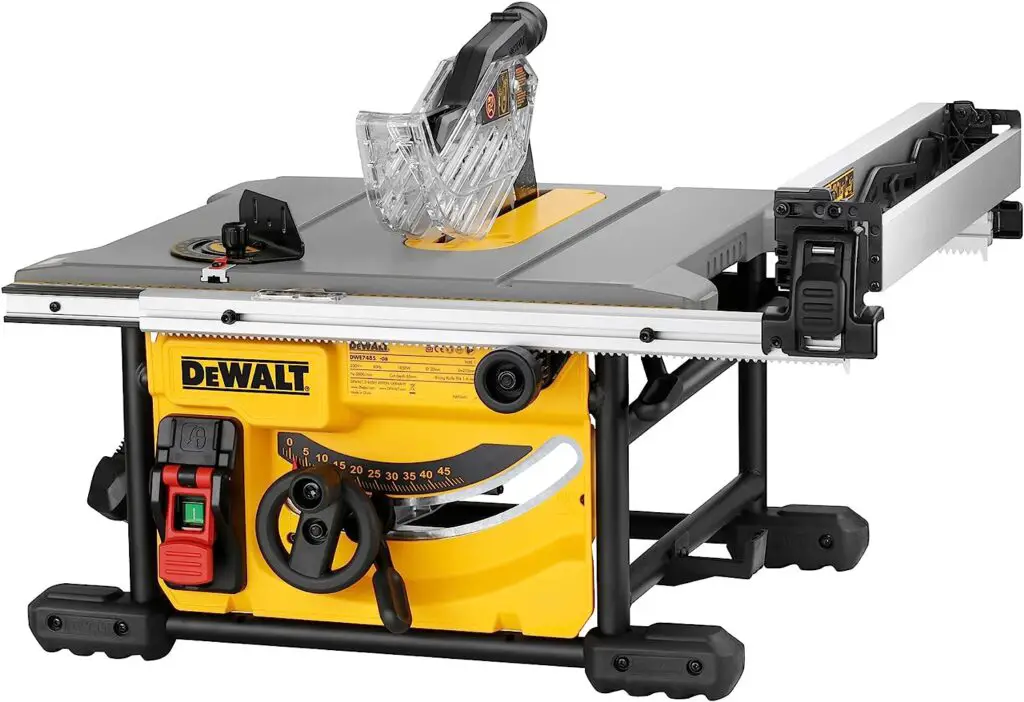
Table saws are one of the most common tools used for cutting wood – both crosswise and along its grain. Rip-cutting is the most frequent application for this type of saw.
Advantages & Disadvantages of Table Saw
Table saws are generally more powerful than other types of saws so they easily cut through thick or dense materials. They reduce the amount of time and effort required for cutting tasks.
In addition to that, they are ideal tools to make various types of joints including dadoes.
Unlike other types of saws, table saws are not designed to cut curves, making them less versatile in certain situations.
While they can cut through many materials, they are limited in terms of the depth of cut they can achieve.
2.3 Jigsaw
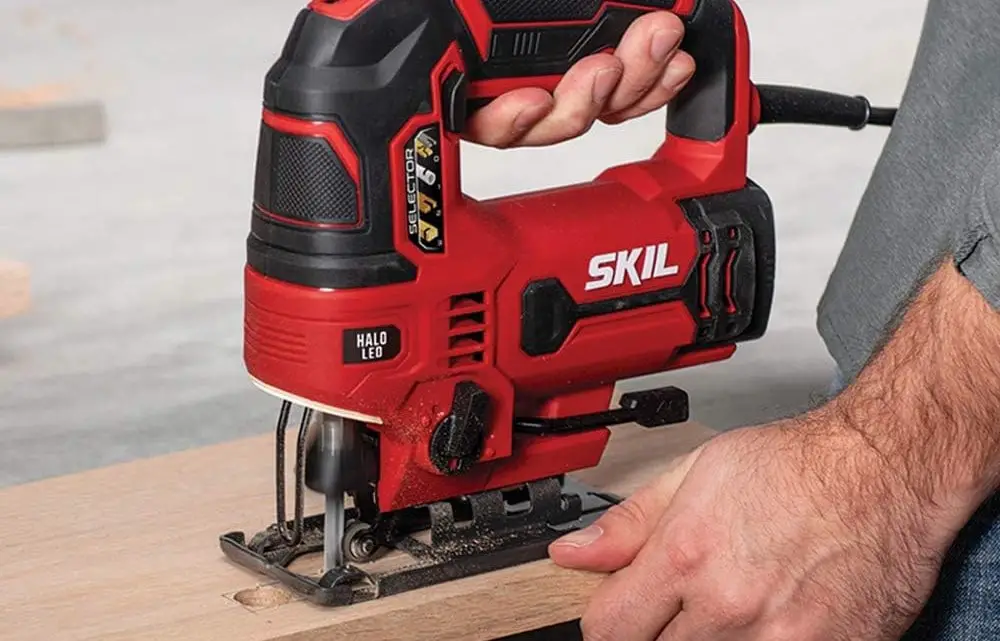
A jigsaw is a great tool for cutting shapes and curves in various materials; particularly wood.
It’s also known as the saber saw and is very versatile in its use. The narrow blade of a jigsaw is fastened to the body by a clamp at the front allowing for greater precision when cutting.
Jig saws can be used to make a variety of cuts including straight lines, bevel, and plunge cuts. The narrow blade makes cutting curved shapes possible.
Advantages & Disadvantages of Jigsaw
The blade and lightweight design of a jigsaw make it easy to maneuver in tight spaces and around curves.
With a straight edge guide, jigsaws can make long straight line cuts which are useful for a variety of projects.
A major disadvantage of using a jigsaw is that its thin blade can easily curve or bend during operation resulting in uneven cuts.
Blades also tend to break and can cause serious malfunctions. They produce a lot of vibration during use, which can make them uncomfortable to use for long periods.
Finally, jigsaws are primarily designed for lighter-duty applications.
Conclusion
We’ve covered a lot of ground about different types of saws available – hand saws, back saws, frame saws, and power saws – their advantages, disadvantages, and when to use them. Here are some key takeaways:
- Depending on the job at hand, hand saws can be a more viable choice than powered tools due to their accessibility and convenience
- Back saws are characterized by a metal rib running along the back of the tool
- Frame saws are perfect for cutting curves and irregular shapes
- Power saws offer speed and efficiency but require more caution and skill to operate safely
Knowing the right types of saw to use for each job can save you time, effort, and money, and also help you achieve better results in your woodworking or construction projects.
